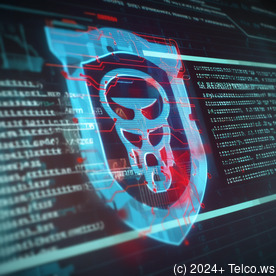- Outstanding Pros ready to help.
- Pay Crypto for Fiat-only Brands.
- Access Top Tools avoiding Sanctions.
- You can buy in total privacy
- We manage all legalities for you.


Multi-Factor Authentication (MFA)
What is Multi-Factor Authentication?
Multi-Factor Authentication (MFA) is a robust information security process that verifies the identity of a user, device, or system by requiring multiple forms of authentication. This layered approach greatly enhances security, based on the principle that no single authentication factor is entirely foolproof. By demanding multiple factors, MFA significantly raises the bar for attackers attempting to breach a system or access sensitive data.




Categories of Authentication Factors
The three primary categories of authentication factors include:
- Knowledge Factor: This is something only the user knows, such as passwords, PINs, or answers to security questions.
- Possession Factor: This involves something the user has in their possession, such as a smart card, token, or mobile device.
- Inherence Factor: This refers to inherent traits of the user, like biometric characteristics such as fingerprints, facial recognition, voice patterns, or iris scans.
Access to sensitive systems or data is granted only when all authentication factors align with stored reference information. For example, withdrawing cash from an ATM necessitates both your bank card (possession) and your PIN (knowledge).




Benefits of Multi-Factor Authentication
MFA significantly enhances security and mitigates the risk of unauthorized access. Here’s how:
- Increased Security: Even if a password is compromised, unauthorized access is thwarted by the need for additional factors.
- Reduced Risk of Data Breaches: Organizations employing MFA can significantly lower their risk of falling victim to data breaches.
- User Confidence: Implementing MFA fosters greater user assurance regarding the security of their information.
- Regulatory Compliance: Many industries, including finance and healthcare, mandate MFA for accessing sensitive data and systems, aligning with security best practices defined in regulations like the EU's PSD2.




Examples of Multi-Factor Authentication
Organizations utilize various MFA methods, including:
- A one-time password (OTP) sent to a user's mobile device
- Biometric identifiers such as fingerprint scans or facial recognition
- Physical tokens displaying a frequently changing numeric code
- Smart cards containing user credentials stored on encrypted microprocessors
- Voice or speech pattern recognition




Conclusion: The Future of Secure Access
In summary, Multi-Factor Authentication is a critical best practice for identity management and access control in today's cybersecurity landscape. Relying on passwords alone is no longer sufficient. A comprehensive MFA strategy leverages what you know, what you have, and who you are to ensure that unauthorized access is prevented, even if one factor—typically a password—is compromised.




Get Started with Multi-Factor Authentication
Interested in enhancing your organization's identity and access security? The price for our premium Multi-Factor Authentication solutions starts at $2,800, which includes a 5-year license and a suite of advanced features designed to meet your security needs. Please proceed to our Checkout Gateway and utilize our Payment Processor to make a payment of $2,800 in favor of our Company, following the provided instructions. Once you have completed your payment, please reach out to us via email, phone, or our website with the payment receipt and your details to set up your Multi-Factor Authentication service. Thank you for your interest!




For further inquiries or additional information about our Multi-Factor Authentication solutions, please do not hesitate to contact us. We are dedicated to providing top-notch security to safeguard your digital environment!